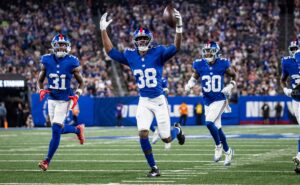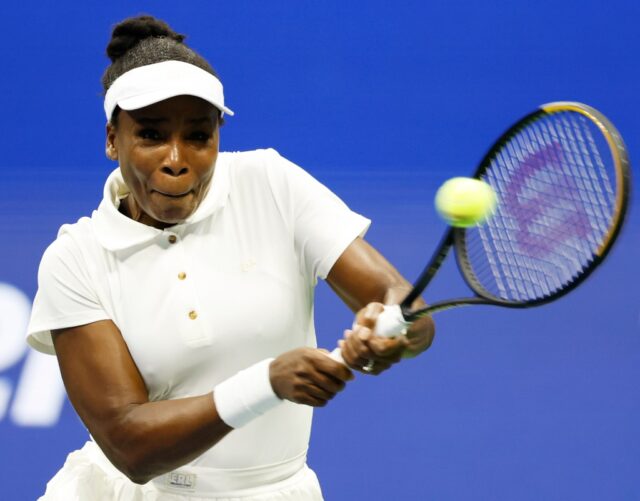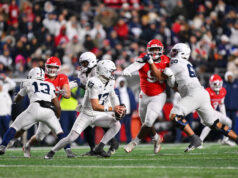Queens, NY — The 2025 US Open is not just about crowning champions—it’s about honoring legacies and challenging long-standing inequalities. This year’s tournament marks a historic milestone: the 75th anniversary of Althea Gibson breaking tennis’s color barrier. But the celebration extended beyond a tribute—it became a declaration of what true inclusion can and should look like, particularly when it comes to Black and independent media.
Honoring a Pioneer: Althea Gibson’s Enduring Impact
In 1950, Althea Gibson, a trailblazer and Florida A&M University alum, stepped onto the court at the U.S. National Championships and changed tennis forever. She was the first Black athlete to compete in the tournament, paving the way for legends like Arthur Ashe, Venus and Serena Williams, Taylor Townsend, Frances Tiafoe, Sloane Stephens, and Coco Gauff.
This year, her monumental contributions were front and center—not just through ceremonial tributes, but through programming that reflected the depth of her influence.
HBCU Live: Where Legacy Meets Culture
Back for its fifth year, HBCU Live took on deeper significance at this year’s Open. The event, a vibrant celebration of Historically Black Colleges and Universities, aligned with Gibson’s 75-year legacy and reminded attendees of the critical role these institutions play in shaping leaders—on and off the court.
Featuring cultural showcases, alumni recognition, student engagement, and dynamic panel discussions, the event moved beyond symbolic nods. It centered Black excellence, reminding the world that the roots of many of today’s tennis stars and changemakers are deeply planted in HBCU soil.

Breaking Barriers Off the Court: Media Inclusion
What truly set the US Open apart this year wasn’t just its tribute to history—it was its commitment to equity in the press box. For far too long, Black and independent media outlets have been sidelined at major sports events, denied access for vague, arbitrary reasons. Meanwhile, legacy outlets often occupy five to six seats—regardless of how connected they are to the culture or communities they’re covering.
But at this year’s US Open, the USTA got it right. Black-led publications weren’t just approved—they were embraced. And in doing so, the USTA sent a clear message: inclusion must include storytellers.
A Stark Contrast to the NFL, NBA, and NCAA
This stands in sharp contrast to the NFL, NBA, and many college athletic programs, where independent and Black-owned outlets often find themselves on the outside looking in—despite having decades of credible work, community trust, and editorial integrity.
Predominantly Black athletes power these leagues, yet often fail to ensure that Black voices are represented in the rooms where narratives are shaped. If your organization boasts a commitment to diversity but does not enforce equitable media access, then your diversity programming is performative, not transformative.
Structural Change, Not Symbolism
A key issue is how these institutions delegate credentialing authority to teams or departments that often operate with little to no oversight. This leaves room for selective gatekeeping that favors mainstream outlets and excludes independent voices, regardless of their qualifications.
If a league’s DEI department cannot intervene in these decisions or hold bad actors accountable, then what is its real function? Cosmetic diversity is no longer acceptable. Real change requires real access.

It’s Time to Raise the Bar
Black and independent media aren’t asking for special treatment—they’re demanding equal treatment. They’ve earned their place through quality journalism, cultural insight, and community engagement. The current credentialing disparities only serve to protect outdated hierarchies and silence diverse perspectives.
Enough is enough. It’s time to eliminate the hollow excuses for exclusion and redefine who gets to be in the room—not based on corporate affiliation, but on relevance, reach, and merit.
A Model for All Sports
The US Open showed what leadership looks like. In addition to honoring Gibson, it hosted “A Celebration of a New Era in Black Tennis”, a powerful panel conversation on legacy and future led by Emmy-winning analyst Monica McNutt. Panelists included tennis pioneer Leslie Allen, actor and HBCU advocate Boris Kodjoe, respected coach Kamau Murray, and 2017 US Open Champion Sloane Stephens.

Their conversation wasn’t just about the past—it was about power, access, and the responsibility of institutions to create space for Black excellence in all forms.
The Call to Action
If the NFL, NBA, and NCAA are serious about dismantling discriminatory systems in media access, they must follow the USTA’s lead. Host annual equity-focused forums, involve Black media in planning conversations, and enforce accountability when unjust exclusions occur.
The media controls the narrative. And when only a select few are allowed to shape that narrative, the truth gets distorted. Athletes, particularly Black athletes, must use their platforms to demand that the media covering their journeys reflects their communities.
The US Open has proven that honoring legacy and promoting equity can go hand-in-hand. The question for other sports institutions is this:
Will you match the energy—or stay stuck in the past?






